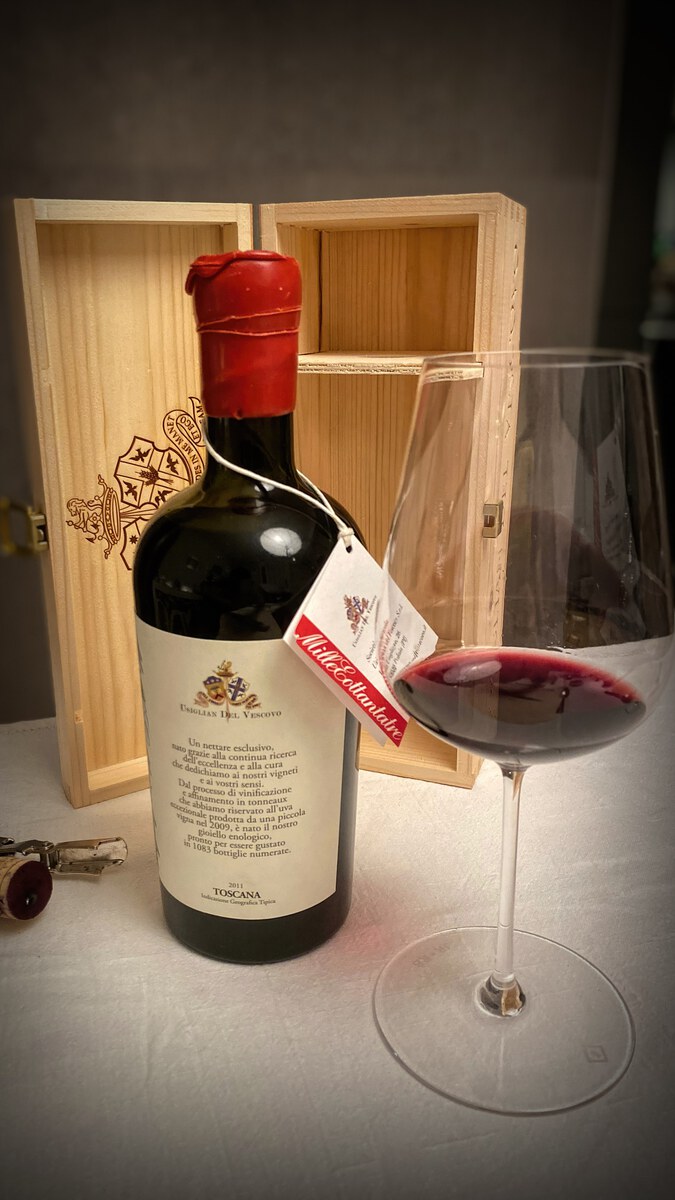Usiglian del Vescovo "Milleeottantatre" 2011
100% Petit VerdotDeep and elegant, complex. Dried violet, leather, underwood and graphite. Sapid, umami.
Tasting Notes
On the glass the 2011 Milleeottantatre from Usiglian del Vescovo has a deep purple colour.
The nose opens with a distinctive leather note. Later come aromas of dried violet, underwood and graphite.
On the mouth notes of graphite and leather prevail.
The mouthfeel is warm and spicy, almost tingly. The tannins, still present on the mouth are soft and elegant.
After airing for an hour the bouquet shows more sapidity and umaminess.
The finish is long.

|
|
Usiglian del Vescovo |
|
|
Milleeottantatre |
|
|
Red & Still |
|
|
Italy |
|
|
Tuscany, Pisa |
|
|
Petit Verdot |
|
|
2011 |
|
|
How it's made
It grows on mixed soil: sandy (90%) with traces of clay (5%), silt (0-5%) and fossils, dry and light in colour. The vine density is low at 5,000 plants per hectare.
The grapes are hand-picked, placed in 200 Kg bins and transported to the cellar where they are de-stemmed and selected on a vibrating belt and then pressed.
Alcoholic fermentation takes place in truncated cone-shaped oak vats with 15-20 days maceration depending on the vintage and frequent pumping over. Malolactic fermentation takes place in cement tanks.
The wine is left to age in new tonneaux for 24 months. This is followed by a final ageing of 18 months in the bottle
Learn more
Petit Verdot
Varietal
Petit Verdot is a red wine grape variety that is mostly used in traditional Bordeaux blends. It ripens much later than the other varieties in Bordeaux, sometimes too late, and as a result, it has fallen out of favor in its native land. When it ripens, it adds tannin, color, and flavor to the blend in small quantities. Petit verdot has gained popularity among New World winemakers, where it ripens more consistently and can be made into single varietal wines. It can also be used to’stiffen’ Cabernet Sauvignon blends’ mid palate.
Link to here... | Derived from 'Petit Verdot' on WikipediaThe barrel "age"
In wine making, the age of the barrel is rather important.
The newer the barrel the stronger will be the influence it has on the wine. It’s easy to understand that as the vintages pass, the wood will become more “neutral” and affect the wine taste and tannin level less.
Since barrels are expensive tools, in wine making there is often a tendency to age a part of the wine in new barrels and a part of it in older barrels. This is a way to keep the cost of the wine making process lower while trying to optimise the amount of flavours and wood quality the wine is exposed to.
Link to here...Barrel wood types
Barrels for wine making are almost only made of oak. Occasionally other types of wood are used, such as acacia and cherry.
One mature oak tree, after growing for decades, will result in only two barrels. So barrels are a rare, expensive tool!
Barrels can be French or American oak. Sometimes they are made of Slavonian oak.
America vs France
With “American” oak, what we really mean is oak from the States, Missuri generally. Because of the differences in climate, French oak is more “dense” than its American sibling. This seems to have an impact in the wine. With denser wood less oxygen passes onto the wine. So, broadly speaking, American oak barrels will pass more “flavours” and oxidise the wine more. That is why, American oak seems to be better suited for fermenting bolder grapes, which can better “take” a stronger interaction of the wood and oxygen influence.
American oak is not only used in the New World. IN the same way, French oak is not only used in Europe. For example, American oak is famously used in the production of Rioja wine in Spain.
As for Slavonian oak, it seems to add a different flavour spectrum to the wine, with notes of clove and nutmeg as well as more “richness” to the texture of the final wine.
Link to here...
